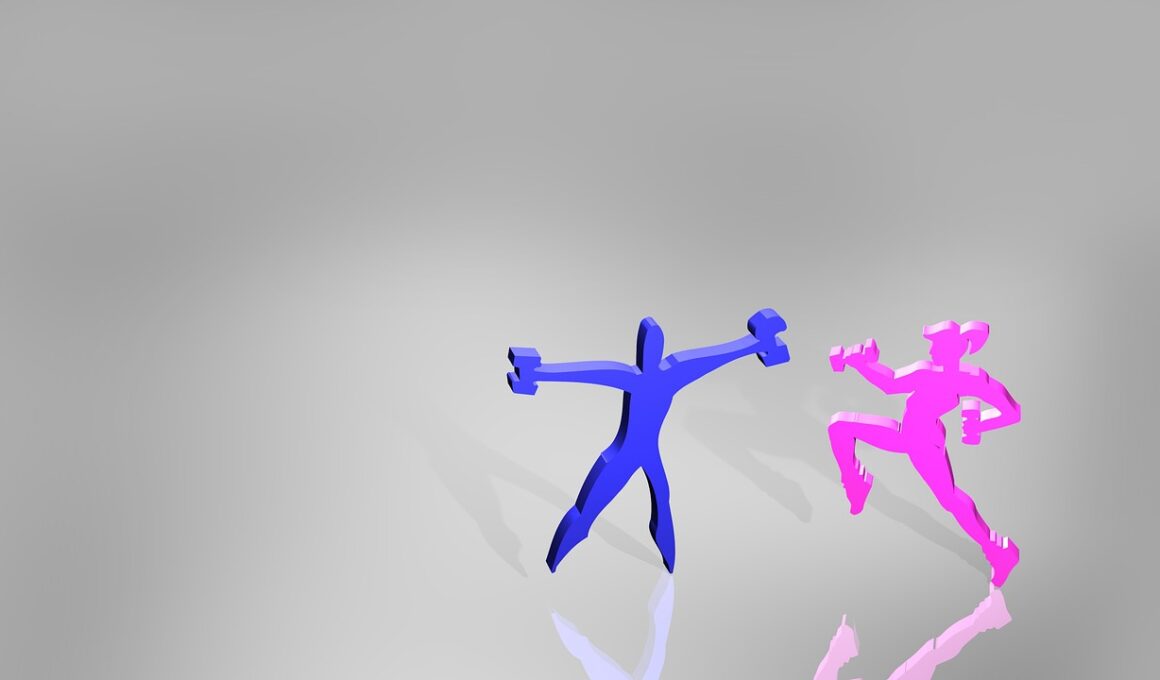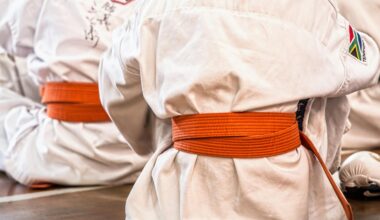Aerobic Dance Styles Influencing Today’s Fitness Programs
Aerobic dance styles are pivotal in shaping contemporary fitness programs around the world. These vivacious forms of exercise combine rhythm, energy, and a variety of movements, making workouts not only effective but also enjoyable. One significant trend is the increasing popularity of fun and engaging dance styles like Zumba and Jazzercise, which seamlessly blend high-energy music with dance moves and aerobic exercises. Participants appreciate the social atmosphere and community feel that these dance classes foster, encouraging consistent attendance and enthusiastic participation. The emotional benefits of aerobic dance, including stress relief and improved mood, contribute to its growing appeal. Fitness professionals are aware that incorporating diverse dance styles can attract a broader audience, allowing them to tailor classes to different skill levels and preferences. Moreover, newer trends such as dance fusion classes, combining elements from hip-hop, salsa, and ballet, offer unique experiences for attendees. These classes are accommodating to everyone from beginners to advanced dancers, fostering a sense of inclusivity and motivation. Such variety not only enhances physical fitness but also nurtures a love for movement among various demographics.
The Emergence of Hip-Hop Dance Aerobics
Hip-hop dance aerobics has emerged as a vibrant trend within the fitness industry, captivating audiences globally. This distinctive style combines traditional aerobic movements with elements of hip-hop dance, resulting in a dynamic and high-energy workout. Participants are drawn to the infectious rhythms and beats that accompany each session, enabling them to express themselves while pursuing fitness goals. Instructors who specialize in hip-hop aerobics often emphasize creativity and improvisation, encouraging participants to find their unique movements as they groove to the music. This approach fosters a sense of ownership over their experience, enhancing motivation and commitment to fitness. Additionally, hip-hop dance aerobics incorporates cardiovascular benefits akin to traditional aerobic classes, yet it often feels less like a workout and more like a dance party. The incorporation of popular music tracks can significantly boost the energy level, ensuring participants remain engaged. Many fitness facilities are investing in training their instructors to deliver high-quality hip-hop dance classes, recognizing the demand for this exciting trend. As a result, more people are integrating dance into their fitness regimens, leading to healthier lifestyles, increased self-confidence, and community building.
Moreover, the blend of aerobic dance and cultural influences plays a significant role in attracting diverse participants. Styles from around the world can enrich local fitness scenes, making classes more inclusive. The presence of international rhythms, such as Latin-infused Zumba or African dance-inspired workouts, can create a multicultural environment that resonates with a broader audience. Instructors often share not just dance techniques but also stories about the cultural origins of various styles. This cultural storytelling enhances participants’ understanding and appreciation, adding depth and context to their fitness journey. The experience transcends physical exercise, encouraging individuals to connect emotionally and socially in the spaces they inhabit. Fitness programs incorporating aerobic dance styles must cater to the desires of the modern fitness consumer. The focus is increasingly shifting to holistic wellness, addressing physical, emotional, and social well-being. Therefore, maintaining a fun atmosphere with a festive spirit becomes paramount. Participants tend to return for classes that foster joy and camaraderie, establishing a sense of community within the colorful tapestry of dance fitness.
The Influence of Technology on Dance Aerobics
Recent advancements in technology have reshaped how aerobic dance is taught and experienced. Online platforms have become vital, enabling users to access dance workouts from home. The convenience allows users to engage with popular instructors or discover new styles at their own pace. This accessibility fosters a wider reach, ensuring more individuals can participate, regardless of their location. Virtual classes expand choices, from live-streamed sessions to on-demand workouts. As fitness technology continues to evolve, more innovations are likely to surface. Wearable fitness technology offers participants real-time feedback on their heart rates, calorie burn, and overall performance, allowing for personalized experiences that enhance effectiveness. Engaging apps that gamify fitness also encourage consistency and accountability. Social features enable participants to connect with their peers, sharing achievements and challenges alike. Furthermore, dance fitness competitions utilizing technology can add an exciting twist, motivating individuals to improve their skills while enjoying the process. Dance fitness programs adopting these technological innovations can create a high-energy, interactive space that keeps participants motivated and in tune with their fitness journey. Engaging with technology in this way elevates the entire dance aerobics experience for fitness enthusiasts.
Moving on, the importance of choreography in aerobic dance cannot be understated. Creative choreography can invigorate a fitness program, keeping participants engaged and excited. Well-designed routines incorporate varied movements, such as turns, jumps, and arm lifts, that not only elevate cardiovascular activity but also improve coordination and flexibility. This careful construction ensures that each class is a fresh experience, reducing the risk of monotony that can lead to decreased attendance. Instructors often draw inspiration from popular dance styles, allowing them to create routines that resonate with participants. Customizing choreography to include different levels of difficulty caters to various skill sets, making classes more inclusive. By regularly updating routines, instructors can introduce diverse techniques while addressing different muscle groups. Participants benefit from improved physical fitness and feel challenged and empowered as they learn new moves. Furthermore, engaging choreography promotes a sense of accomplishment, driving consistent engagement within the class. Such practices ensure that participants not only achieve their fitness goals but also develop a lifelong passion for dance aerobics, ultimately leading to a healthier lifestyle.
The Community Aspect of Dance Aerobics
Community plays a crucial role in the success of aerobic dance classes. Participants often find motivation and a sense of belonging through group settings, fostering camaraderie and support among classmates. Engaging with others in fitness goals encourages accountability, creating an environment where individuals feel inspired to attend regularly. The social interactions that stem from shared experiences, whether within the class or through social gatherings, contribute to participants enjoying the journey towards fitness. Group challenges or themed dance parties can make classes even more enjoyable, uniting participants in fun and excitement. Many studios now organize events that celebrate milestones or achievements, enhancing community spirits further. Fitness professionals recognize the importance of nurturing relationships among participants, often encouraging supportive interactions during and after classes. Establishing memorable experiences provides participants with something to cherish, leading to lasting connections beyond the workout. Ultimately, enhancing the community aspect can significantly impact retention rates, keeping individuals committed to their fitness journeys. This sense of belonging transforms workouts into shared experiences, making dance aerobics not just a fitness trend, but a lifestyle that enriches lives.
Lastly, we must acknowledge the growing accessibility of dance aerobics for different demographics. Programs developed for various age groups, abilities, and fitness levels can cater to everyone, promoting inclusivity. Dance aerobics can be adapted for older adults, individuals with disabilities, or those seeking low-impact exercises. Designing classes tailored to specific needs expands the reach of aerobic dance programs, ensuring that more people can benefit from its delightful aspects. Many instructors now possess certifications focused on working with diverse populations, emphasizing safe practices while also maximizing enjoyment. Modified routines that account for mobility challenges make dance accessible to individuals who may feel discouraged by traditional forms of exercise. Additionally, creating environments that encourage participation regardless of prior dance experience helps build confidence. This inclusive approach allows more individuals to experience the joy of dance while cultivating healthy habits. The rise of dance programs specially designed for children fosters early engagement with fitness, promoting lifelong healthy habits. As dance aerobics continues to evolve, maintaining a focus on accessibility ensures that this vibrant fitness style remains welcoming and enjoyable for all.
In conclusion, the impact of aerobic dance styles on today’s fitness programs is evident and substantial. The integration of various dance genres into aerobic routines has transformed traditional workout formats. These vibrant and energetic sessions serve to inspire individuals of all fitness levels, making exercise enjoyable rather than a chore. Emerging styles, technological advancements, and a focus on community highlight the adaptability and growth within this sector. The incorporation of hip-hop, cultural influences, and choreography maintain high levels of participation and excitement. Furthermore, the inclusivity and accessibility of dance aerobics make it a go-to choice for fitness enthusiasts from diverse backgrounds and abilities. Instructors play a vital role in shaping this dynamic world, providing encouragement and expertise to help participants achieve their goals. Fostering a supportive and creative environment ensures that individuals feel motivated and connected to their fitness journeys. As the popularity of dance aerobics continues to rise, fitness programs will likely evolve in response to the changing landscape of demands and preferences. Aerobic dance will remain a powerful tool in promoting healthier lifestyles, uniting communities, and celebrating the love of movement.


